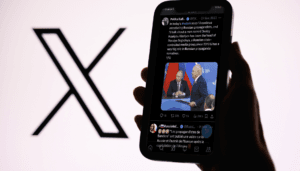Sommaire
Who killed Paul Varry? When the cacophony of social networks fuels radicalism
The death of Paul Varry, a cyclist killed in Paris after an altercation with an SUV driver, has given rise to numerous interpretations, with everyone applying their own prism to the events. The exchanges surrounding this tragedy illustrate the extent to which social networks have become cacophonous and show how the political debate has appropriated this cacophony to perceive the facts only through its own vision. How did this happen? Here's an attempt to explain.
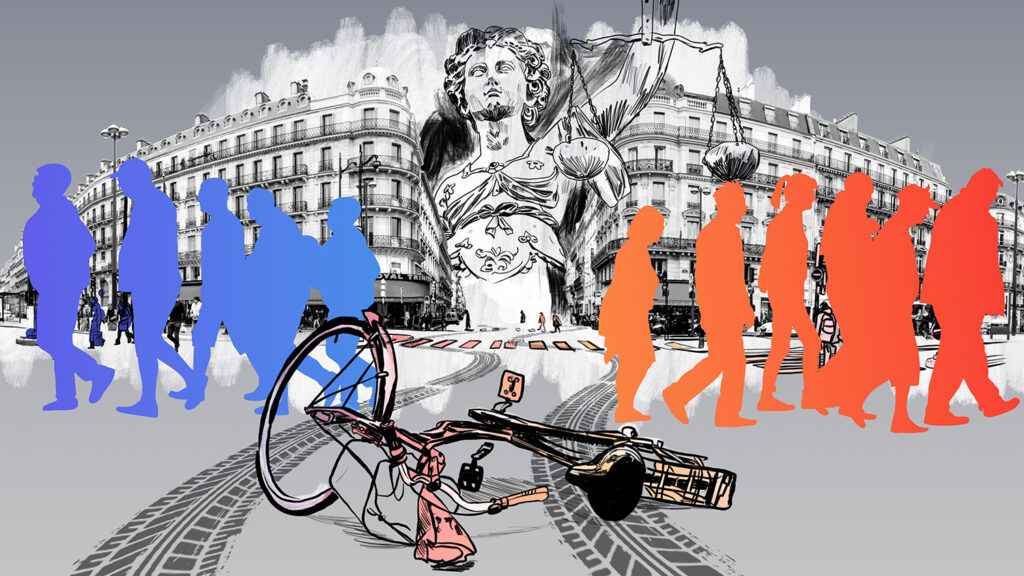
The advent of communities
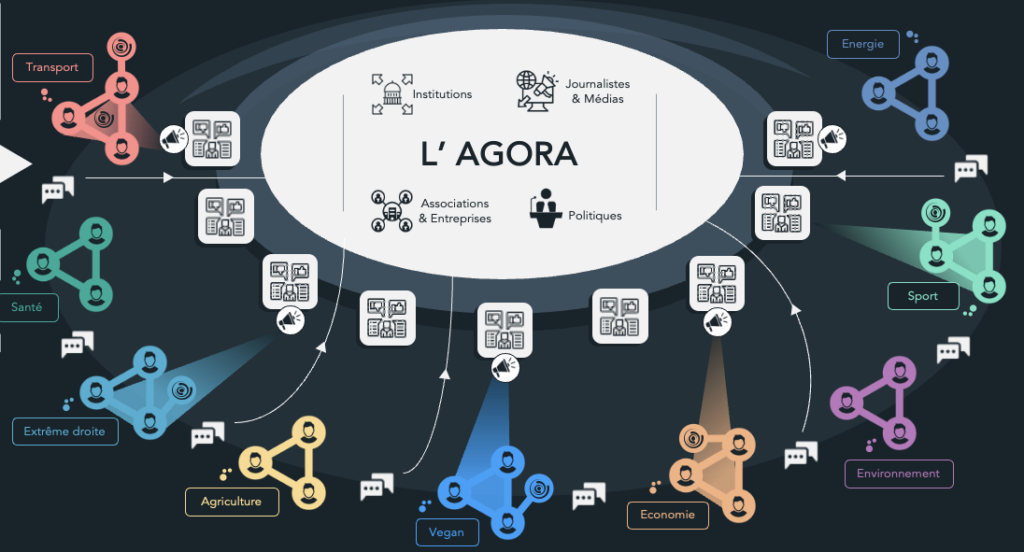
In the beginning, of course, there is the agora, the space through which the main stakeholders in politics and the constitution of society pass.
Exchanges in this closed environment took place through interpersonal meetings (with a very strong address book logic) or through interposed exchanges in a limited number of media.
With social media, everyone has been given immense power: the power to publish anything. This has led to the creation of an information market (or a cognitive market, according to other researchers), offering everyone the opportunity to individually target new niche markets that the traditional media could not pre-empt. The problem is that this power has been pre-empted more by the extremes and activists, who publish far more frequently and intensively than any other stakeholder. For the rest, a new type of professional has emerged: content creators, some of whom are appearing in the traditional media, making the boundaries increasingly porous.
Politicians have adopted a two-pronged approach to social networking: they have become creators of content, and they have taken over militant spheres.
We have moved on from a system of physical meetings organised by the parties, with discussions in cells or sections, to a system where audiences on social networks have become the absolute indicators for the parties. But these indicators are actually made up of niches and bubbles, often far removed from the core electorate.
This can lead to two phenomena: so-called astroturfing ( a fake phenomenon where a bubble acquires the illusion of a majority thanks to media mechanisms), which is a success, and disconnection with the grassroots (the expression of minority themes with no connection to public opinion).
Information framing, newsjacking and the rhetorical arena
Information framing
To develop their network around activists, politicians will give a vision of events that corresponds to their own "political software". They apply their own "prism" of interpretation to each event.
So when the coronavirus arrived, Monique Pinçon-Charlot described it as a "holocaust aimed at wiping out the poorest part of humanity", while Yannick Jadot claimed that Covid-19 was caused by deforestation and fossil fuels.
This brings us to the news we are discussing today: the death of Paul Varry and the way in which the news spread between 15 and 19 October 2024 :
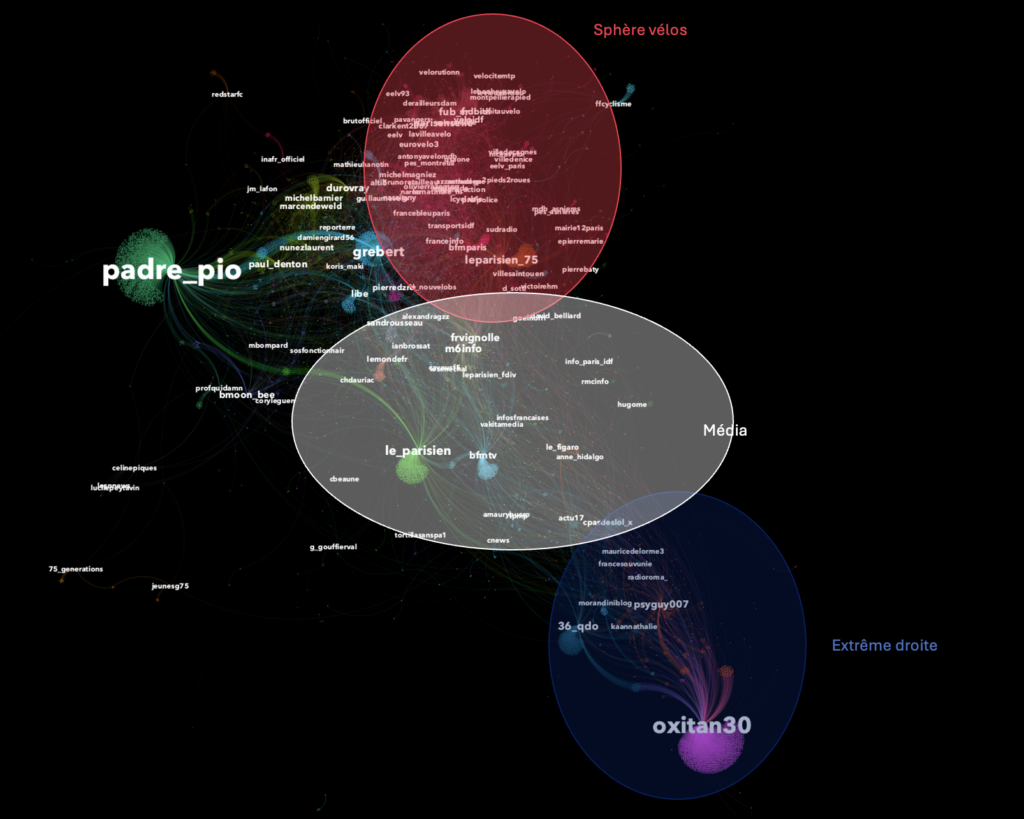
In terms of propagation, this is relatively clear:
- The announcement comes from the cycling community and Le Parisien.
- It was then broadcast on BFM TV, and the velotaffeur community clearly grew in size.
- The far-right community then objects on the basis of the person's origin and background.
The impression is that it is a small number of people and a simple opposition between two camps. However, the mapping of relationships sheds more light on the forces at play:
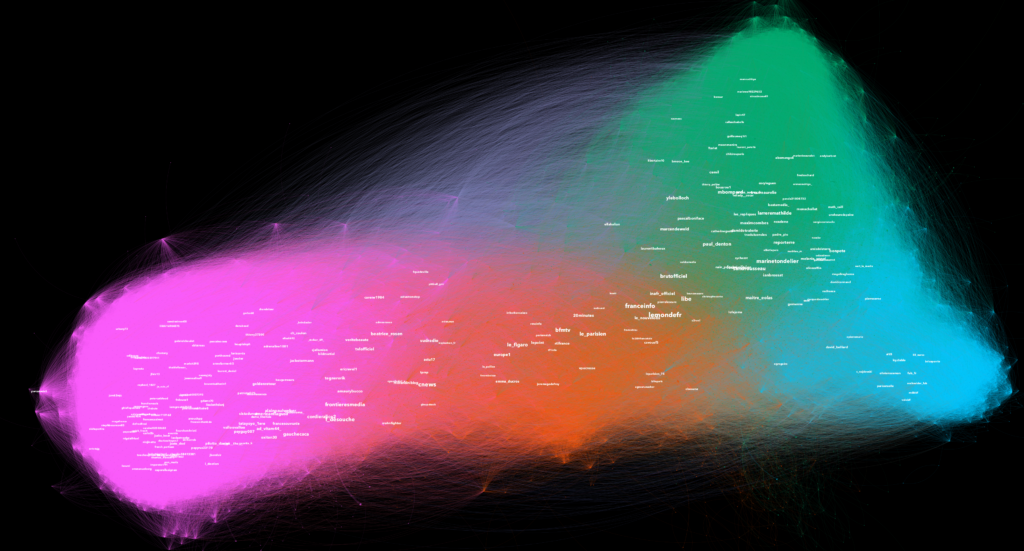
It can be downloaded in HD here with communities :
- Extreme right and patriots in pink
- Media and EPR in orange
- Cyclists and cyclotaffeurs in blue
- EELV & LFI in green
David Belliard's influence in the bike-riding and cycling community is also very interesting, giving him a voice in the debate.
Newsjacking
The subject of current affairs brings together multiple communities with diverse interests, because it allows political subjects to be tackled by applying one's own reading grid, while taking advantage of the phenomenon of newsjacking. Newsjacking is a strategy that involves reacting quickly to a news event in order to capture the public's attention around the issue in question.

Rhetorical arena
And all this debate takes place in rhetorical arenas.
The rhetorical arena, according to Frandsen, represents a discursive space where various actors take part in a public debate or controversy, each contributing their own points of view and rhetorical strategies. In the case of the tribute to Paul Varry, the rhetorical arena becomes a place where different groups (cyclists, political activists, the media, the far right, etc.) position themselves, comment on and interpret the drama according to their own ideological frameworks and interests.
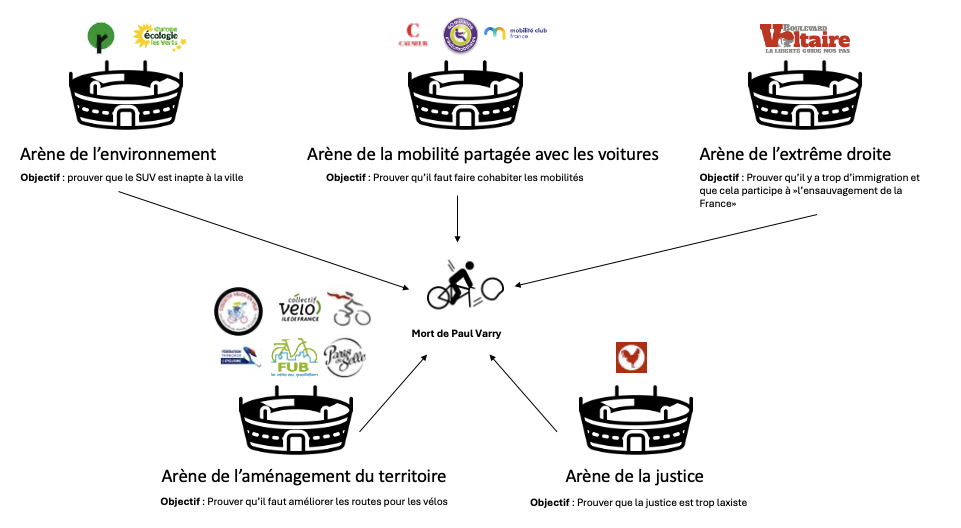
This arena is marked by a strong plurality of players, each reacting according to their own vision of events. The problem is that they are acting in different arenas, with different end goals. So :
- The environmental arena: it was the SUV that killed Paul Varry
- The far-right arena: an Algerian killed Paul Varry
- The arena of justice : Paul Varry was killed by a multi-recidivist
- The planning arena : Paris City Council killed Paul Varry
- The motorists' arena: it was the deterioration in relations between road users that killed Paul Varry
At the moment there is even the ever-present arena of the Israeli conflict, with comments about Ariel Melki Chamoun's origin and religion.
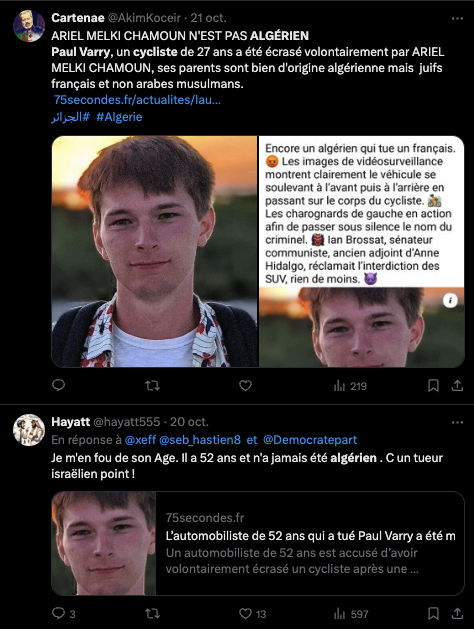
Conclusion
This case shows that the emergence of social networks, which was supposed to create a connection and encourage freedom of expression, has in fact led to the formation of islands of information. We now live in a system where everyone remains locked up in their own spheres, monopolising subjects and fighting the enemy without agreeing on the ultimate objective of the battle.
It's no longer freedom of expression but automatic control of expression. It's a world where everything is left or right, and where we shouldn't take political or cultural ownership of things that basically don't belong to us. At this jousting match, even the militants, caught up in this incessant repetition, seem to be talking only to themselves.
Who killed Paul Varry? The answer is Ariel Melki Chamoun. And in these events, each and every one of the underlying debates are legitimate, all the more so for the victim. But if everyone could, if only for a moment, put aside their own issues and leave their own arena, our collective agora would be better off and we wouldn't have this overdose of political radicalism and a continuing decline in living together.

